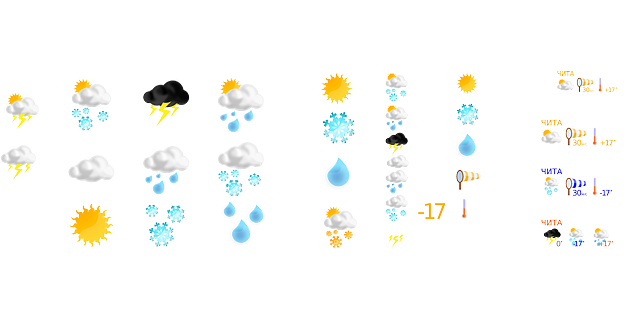Karachi, Pakistan's economic hub, faces significant climate challenges due to changing precipitation patterns caused by global warming. Monsoons are becoming more variable, leading to heavier rains and flash floods during certain months while prolonged droughts increase between seasons. This dual threat demands urgent adaptive strategies for urban planning, water resource management, and resilience against extreme weather events. Predicting future rainfall scenarios based on advanced models and historical data is crucial to prepare for critical periods of intense rainfall, mitigate risks from disasters, and ensure the city's adaptability in a warming world.
Karachi, Pakistan’s vibrant metropolis, faces evolving climatic conditions, significantly impacting its precipitation patterns. This article explores the intricate relationship between global warming and local weather dynamics, specifically focusing on Karachi. Through historical analysis, we track precipitation trends over time, revealing key changes. We then delve into future projections, utilizing scientific insights to predict Karachi’s precipitation outlook in a warming world, offering crucial information for both scientists and policymakers.
- Understanding Karachi's Climate: A Foundation for Analyzing Precipitation Patterns
- The Impact of Global Warming on Local Weather: A Focus on Karachi's Changing Conditions
- Historical Analysis: Tracking Precipitation Trends in Karachi Over Time
- Future Projections: Predicting Karachi's Precipitation Patterns in a Warming World
Understanding Karachi's Climate: A Foundation for Analyzing Precipitation Patterns

Karachi, Pakistan’s economic powerhouse and a vibrant metropolis, experiences a semi-arid climate characterized by distinct seasons. Understanding this region’s climatic foundation is crucial for analyzing its unique precipitation patterns. The city’s weather is influenced by monsoons, with summer rains from July to September and occasional winter showers. These seasonal variations significantly impact the local ecosystem and water availability.
The variability in Karachi’s precipitation patterns has been a subject of interest due to climate change. Recent studies indicate a potential shift in rainfall distribution, with heavier downpours during specific months. This changing pattern poses challenges for urban planning and water resource management. By studying historical data and current trends, scientists aim to predict future scenarios, enabling the city’s inhabitants and authorities to prepare for potential impacts on agriculture, infrastructure, and overall resilience.
The Impact of Global Warming on Local Weather: A Focus on Karachi's Changing Conditions

Global warming is significantly altering precipitation patterns worldwide, and Karachi, Pakistan’s largest metropolis, is no exception. The city, known for its bustling streets and vibrant culture, is experiencing noticeable changes in its weather conditions. Rising temperatures and shifting atmospheric circulation patterns are intensifying heatwaves and altering rainfall distribution.
These changes manifest in more frequent and severe flash floods during the monsoon season, as warmer air holds more moisture, leading to heavier downpours. Conversely, prolonged periods of drought become more common between monsoons due to reduced evaporative cooling. Karachi’s inhabitants are thus facing a dual challenge: increased intensity and unpredictability of rainfall, coupled with extended dry spells. These dynamics underscore the urgent need for adaptive strategies to mitigate risks and ensure resilience in this densely populated urban center.
Historical Analysis: Tracking Precipitation Trends in Karachi Over Time

Karachi, as one of Pakistan’s most populous cities, has experienced significant changes in precipitation patterns over time, reflecting broader trends across the region. Historical records and weather data offer valuable insights into how Karachi’s climate has evolved. Analysis of these data reveals a notable shift in rainfall distribution. Traditionally, Karachi enjoyed a monsoonal climate with distinct wet and dry seasons. However, recent decades have witnessed an increase in irregular precipitation, with heavier downpours during specific periods and prolonged dry spells between them.
This trend is not limited to Karachi but is part of a broader phenomenon affecting much of South Asia. Scientists attribute these changes to the influence of climate change, where global warming patterns disrupt traditional monsoon cycles. Tracking these trends is crucial for understanding the potential impacts on water resources, agriculture, and urban planning in Karachi. It also helps identify critical periods of intense rainfall, which can inform disaster preparedness strategies to mitigate risks from flooding and other weather-related events.
Future Projections: Predicting Karachi's Precipitation Patterns in a Warming World

As the global climate continues to warm, understanding future precipitation patterns in densely populated urban centers like Karachi is paramount. Modelers and climatologists are leveraging advanced weather models and historical data to predict how Karachi’s rainfall might shift over the coming decades. These projections suggest that while some models predict an increase in overall rainfall due to higher atmospheric moisture levels, others forecast more intense but less frequent downpours, highlighting the unpredictable nature of climate change impacts.
Karachi’s unique geographical location makes it particularly vulnerable to these shifts. Any changes in precipitation patterns could have significant implications for water resources, urban planning, and infrastructure. For example, increased frequency of heavy rainfall events may lead to more severe flooding, while prolonged dry spells could strain water supplies and exacerbate existing issues with sanitation and drinking water accessibility. Understanding these future projections is crucial for the city’s resilience and adaptability in a warming world.
Karachi’s climate, like many cities worldwide, is undergoing significant changes due to global warming. By understanding historical precipitation patterns and projecting future trends, we can better prepare for the challenges ahead. The analysis presented in this article highlights the importance of monitoring and adapting to Karachi’s evolving weather conditions, ensuring resilience and sustainability for the city’s residents and infrastructure. As climate change continues to impact our urban centers, it is crucial to stay informed and take proactive measures.
